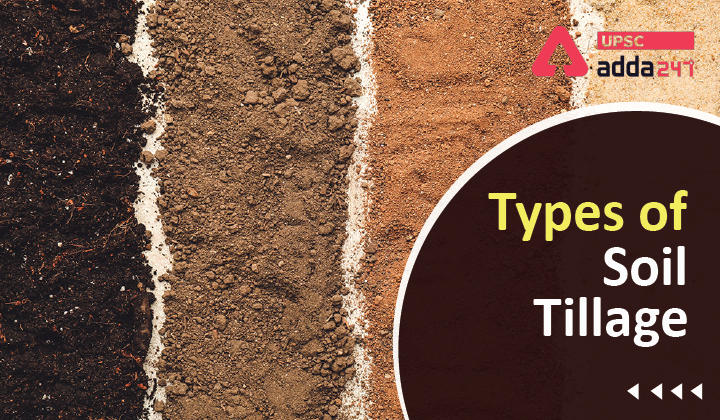Table of Contents
Soil tillage UPSC
- Soil tillage is an important practice for a good agricultural produce. It is the agricultural preparation of soil by mechanical agitation of various types, such as digging, stirring, and overturning. In this article, we will discuss about tillage and the types of tillage.
What is tillage?
- Soil tillage meaning: Physical Manipulation of soil with tools and implements for obtaining conditions ideal for better seed germination, seedling establishment and growth of plants is called tillage.
- Soil tillage is a method of soil preparation for seedbed preparation, sowing or transplanting, and for crops’ growth.
Objective of soil tillage
- To facilitate adequate soil aeration for gaseous exchange in the seed and root zone
- Adequate seed-soil contact to permit water flow to seed and seedling roots
- A non-crusted soil to permit seedling emergence
- A low-density soil that permits root elongation and proliferation
- To create an environment that provides adequate light to the seedling (weed free environment).
- To create pest and pathogen free environment
- To mix the applied manures and fertilizers with the soil
- To remove the hardpan, if any to increase the soil depth for water absorption
Types of tillage: Based on time
Tillage is normally classified as given in the following image
Primary tillage
- Primary tillage is the first soil tillage after the last harvest.
- It is conducted when the soil is wet enough to allow ploughing and strong enough to give reasonable levels of traction.
- This can be done immediately after the crop harvest or at the beginning of the next wet season.
Types of primary tillage
- Deep Tillage: Deep ploughing turns out large sized clods, which are baked by the hot sun when it is done in summer. These clods crumble due to alternate heating and cooling and due to occasional summer showers. This process of gradual disintegration of clods improves soil structure.
- Subsoiling: Subsoiling is breaking the hard pan without inversion and with less disturbance of top soil. The effect of subsoiling does not last long. To avoid closing of subsoil furrow, vertical mulching is adopted.
- Year-round tillage: Tillage operations carried out throughout the year are known as year-round tillage. Repeated tillage operations are carried out until sowing of the crop. Even after harvest of the crop, the field is repeatedly ploughed or harrowed to avoid weed growth in the off season.
Secondary tillage
Secondary tillage is the lighter or finer operations performed on the soil after primary tillage. The purpose of secondary tillage is generally to
- reduce clod size,
- weed control,
- incorporate fertilizers,
- puddling and
- levelling soil surface.
We will discuss the tillage system like conventional tillage and conservation tillage (like zero tillage) in our next article.



 TSPSC Group 1 Question Paper 2024, Downl...
TSPSC Group 1 Question Paper 2024, Downl...
 TSPSC Group 1 Answer key 2024 Out, Downl...
TSPSC Group 1 Answer key 2024 Out, Downl...
 UPSC Prelims 2024 Question Paper, Downlo...
UPSC Prelims 2024 Question Paper, Downlo...




